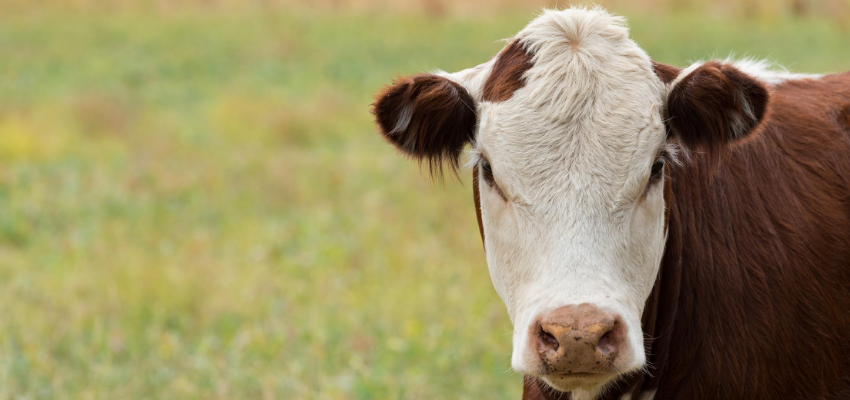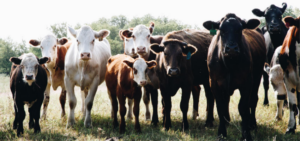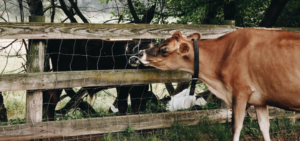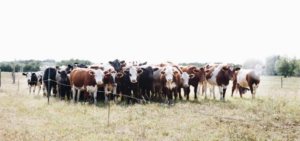The Meat Lifecycle: Mapping The Many Pathways of Beef Production

Grass-fed? Feedlot raised? On-farm slaughter?
We breakdown how beef gets to your plate.
The pandemic has definitely shed light on some of the perils of our industrialized food system, and it’s hit very close to home with several meatpacking plants in Minnesota, including the JBS USA pork processing plant in Worthington, the Pilgrim’s Pride chicken plant in Cold Spring, and Jennie-O Turkey in Melrose among others, temporarily shutting down because of coronavirus outbreaks.
If all of that news has you rethinking how you buy your meat and who you buy it from, then keep reading. We hope that by sharing this information, put together by our friends at Greener Pastures, that should you chose to purchase local meat you are armed with the knowledge to make decisions that are authentic to your values so you can vote with your fork and feel amazing about your choices.
For many, the process of buying beef is as simple as going to the store and picking a cut off the shelf. Sometimes we’ll opt for pieces of meat that claim to come from cows who live a happy, healthy, pasture-raised life in an effort to make a small difference with our purchase. But what does that all really mean? When picking out meat, what are the points in the life-cycle that we should consider? Does it make a difference if cattle is grass-fed or corn-fed?
We know, that’s a lot to take in. And at this point, the entire process of meat production may feel like a mystery. We all want to believe that our beef is coming from green pastures like the ones shown above the grocery store display, but how do we really ensure that’s what we’re getting? To make this discovery process a little easier, we’ve mapped out the lifecycle of beef, and the many pathways an animal can take before it ends up on your table. That way, the next time you are hoping to stock-up your freezer, you have the tools to seek out meat that both tastes good and aligns with your values.
Birth
On-farm: Sometimes, cows are born on the farm where they will spend their life. This provides a few advantages: 1) calves are able to spend more time with their mother which puts less stress on them, 2) calves or young cattle do not have to go through a move early in life, further reducing their stress, and 3)the farmer gets to know the animal better making it easier to recognize unusual behavior or sickness.
Off-farm: The majority of beef cattle in the United States will live their life on several different farms. In these cases, animals are born on one farm and often moved to a Concentrated Animal Feeding Operation (or CAFO) where they are finished, usually on a feedlot. In others, an animal may just be sold between farms after it is born. This movement puts extra stress on the animal leading to lower quality of life, and less flavorful meat.
Life
Pasture-Raised meats: Cattle raised on pasture have the highest quality of life with access to fresh air, room to roam, and the ability to live in their natural environment. Farms with harsh winters will save hay in the summer months to ensure their cattle are grass-fed year-round. In this instance, pasture-raised refers to where an animal spends its life, and grass-fed refers to what an animal eats.
Combination: Some cattle are raised in an outdoor pasture-like space, but eat a mix of grass and grains like corn. In these cases, farmers may not have enough space to pasture-raise all of their cattle all the time, and feeding cattle corn can be cheaper and hasten growth. Therefore, cattle get some of the benefits from a pasture-like setting, but their diet may lead to meat with fewer health benefits.
CAFO: A concentrated animal feeding operation or CAFO is where cattle are raised in tight quarters, without grass and raised on a diet of grains and corn. For beef cattle, this often looks like feedlot conditions, often lacking grass or shade. This system finishes or gets the animals to a weight where they are ready for slaughter, as fast as possible. For the animals, it is a low quality of life. For the farmer, it’s a cheap and expedient form of production.
Death
On-Farm Slaughter: A very small number of farmers slaughter their cattle on the farm, or in the pasture. Animals who are slaughtered on the farm may have the lowest stress death, as they don’t need to be transported before they are killed. Sometimes slaughter is done in the pasture using traditional methods, or with a mobile slaughterhouse unit. On-farm slaughter can result in the best-flavored meat. From there, the beef is sent to be processed, or butchered, into cuts you would find at the grocery store.
Small Scale Slaughter: Most farmers opt to send their cattle off-farm for slaughter, as they may not feel equipped, may not want to have to take on the emotional burden of slaughtering their own animals, may not have the licensing or facilities to do so and may find it cheaper to use a local USDA inspected slaughterhouse. By working with a small-scale, local slaughterhouse they can still support the local economy and support safer working conditions for butchers.
Large-Scale Slaughter: The majority of beef is sent to large-scale meatpacking plants due to their accessibility and low-cost. Mass production processing facilities are extremely unsafe for workers, leading to many injuries. According to the GAO, meatpacking is one of the most hazardous US jobs. Many of these plants have also been the source of many COVID-19 outbreaks, leading to lower quality butchering.
Now that you know a little more about the many stages that meat can go through during its lifecycle, put your knowledge to use. Start a conversation with your farmer about where they choose to slaughter, ask the deli-counter worker if they have pasture-raised options, or search for farms that use small-scale slaughterhouses near you. Before you know it, you’ll be well on your way to eating that you can feel good about.
Recommended resources:
Minnesota Grown
Minnesota Association for Meat Processors
Grassfed Cattle Co
Swanson Meats
MN Beef Council
MN Cattlemen’s Association
Greener Pastures is a blog, community, and activism hub in the upper midwest here to make everyday support of humane, sustainable agriculture easy and seamless with your lifestyle. Their mission is to help our country move away from factory farming and towards humane, sustainable agriculture. Learn more at togreenerpastures.org.



